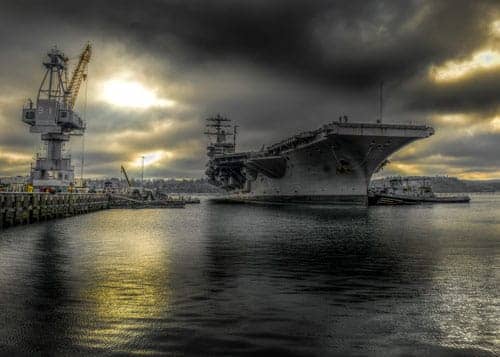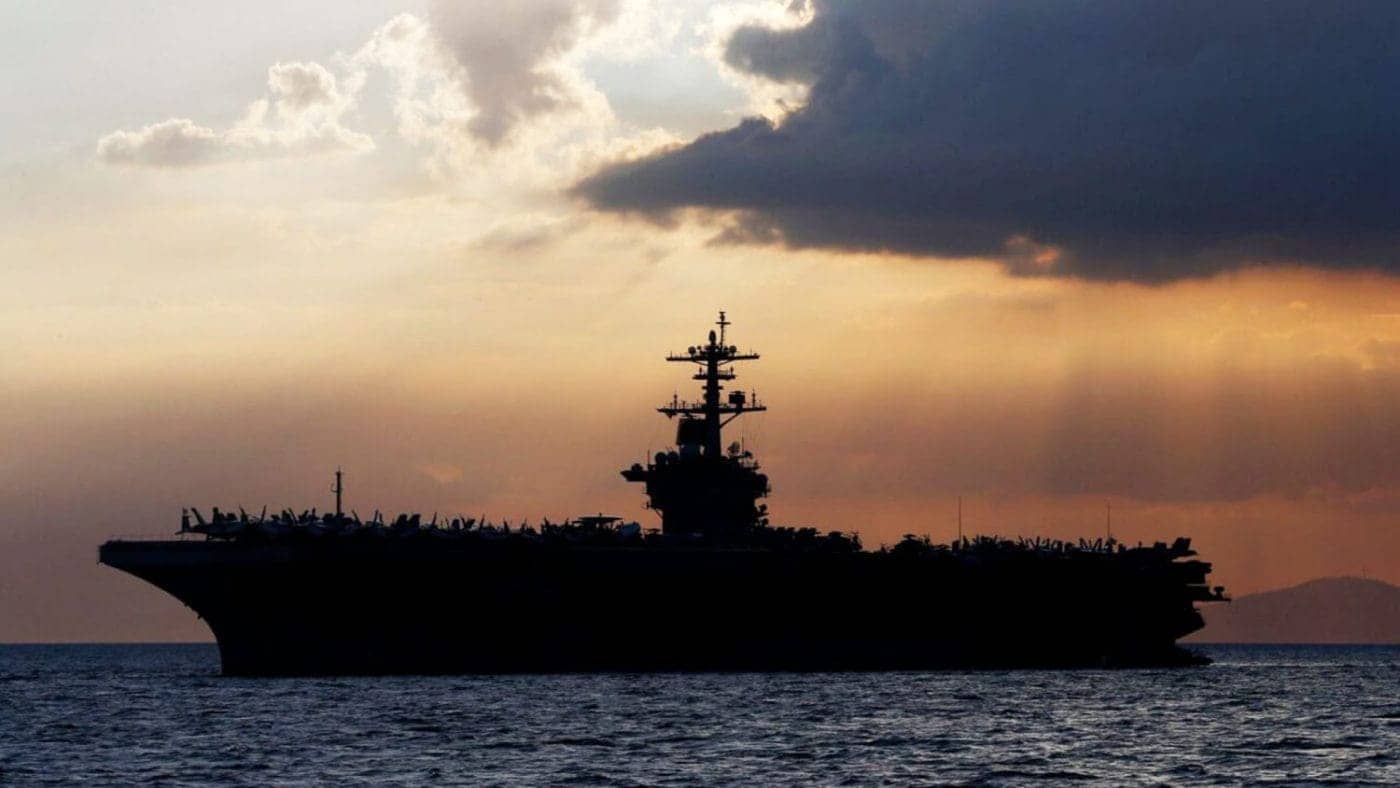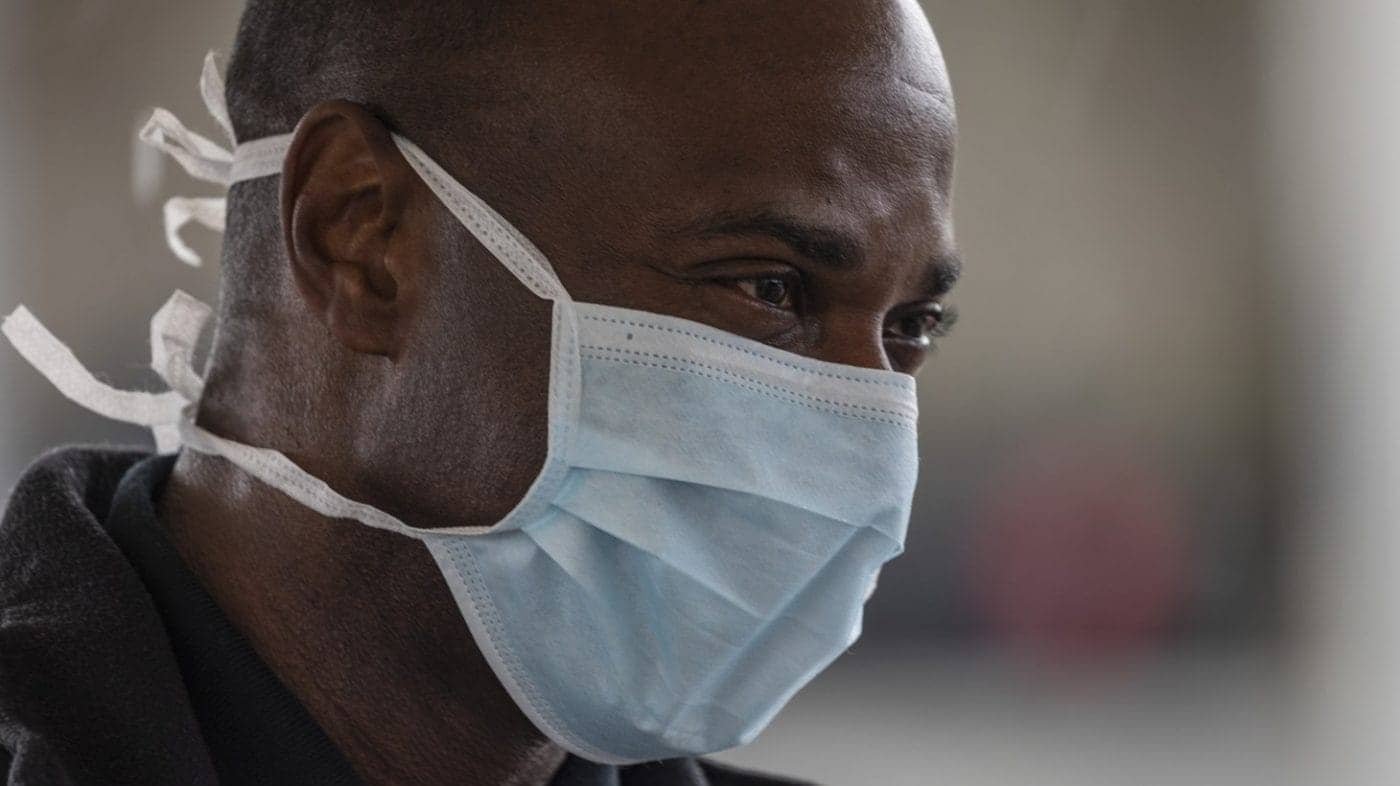
by Ann Garrison
On April 9, the Kitsap Sun reported that Pentagon and Navy brass were in conflict about whether there’s a COVID-19 outbreak on the nuclear aircraft carrier USS Chester Nimitz docked at the Puget Sound Naval Shipyard in Bremerton, Washington. I grew up in Bremerton, so much of this story is familiar to me, but like all COVID-19 stories, it’s changing fast.
The brass may have come to an agreement about what’s happening on the Nimitz and what to do about it by the time this is published, but dissension and disorientation will no doubt continue as long as the coronavirus spreads and kills, especially in the Navy, where sailors share particularly close quarters.
Before the conflict about COVID-19 aboard the Nimitz, the Navy was set to deploy it to the Pacific to “relieve” the USS Theodore Roosevelt, which was already docked in Guam because of a COVID-19 outbreak onboard. On April 14, Stars and Stripes reported that one sailor on the Roosevelt had died of the virus, another was in intensive care, at least four had been hospitalized, and 589 had tested positive.
Most of the crew of about 4,800 had been transferred from the ship to Guam, but roughly a thousand remained on board to perform key functions such as the operation of the ship’s nuclear reactors. Several sources reported that the sailor from the Roosevelt was the second US serviceperson to die of COVID-19.

Not surprisingly, the 160,000 Micronesian natives of Guam, a US island territory, aren’t happy about hosting hundreds of infected sailors in their beachside tourist hotels, but their home hasn’t been their own for a long time; the US seized the island from Spain in 1898. It’s now the site of Anderson Air Force Base and Naval Base Guam, situated a mere 2,100 ocean miles from the Korean Peninsula.
In April 2017, NPR International published a story headlined “Why Is North Korea Threatening Guam?“ (LOL). It read:
“There is trouble in paradise – but that is nothing new for Guam. The U.S. island territory in the western Pacific Ocean is ringed by beaches, studded with palm trees and packed with bombs. It’s small but strategically significant.
Guam is, to say the least, essential to US Pacific military strategy. It’s probably the last place the Navy would have wanted to weather a pandemic, restless natives or no.
“After President Trump threatened to bring ‘fire and fury’ down on North Korea, Pyongyang said Wednesday that it is ‘carefully examining the operational plan for making an enveloping fire at the areas around Guam.’
. . .
“The U.S. uses the island for war games and joint exercises. Guam also stores a massive quantity of weapons. As of 2014, according to Andersen Air Force Base, Guam held ‘the largest munitions stockpile in the world’ – stored in igloos ‘deep [in] the jungle, surrounded by brown tree snakes and wild boar.’”
Guam is, to say the least, essential to US Pacific military strategy. It’s probably the last place the Navy would have wanted to weather a pandemic, restless natives or no.
Or would that be Albuquerque, home to New Mexico’s Kirtland Air Force Base and Sandia Labs, which would be the world’s third greatest nuclear power if cities were in the running?
Or maybe my hometown, Bremerton, home to the Puget Sound Naval Shipyard, where the USS Nimitz now awaits orders to deploy or not, due to conflict in the chain of command about how to handle COVID-19 infections among its crew.
The Puget Sound Naval Shipyard repairs, overhauls, refuels and recycles the Navy’s nuclear-powered and armed aircraft carriers and submarines. In 2004, Naval Base Bremerton merged with Naval Submarine Base Bangor to become Naval Base Kitsap [County]. It includes the Strategic Weapons Facility Pacific (SWFPAC), which provides maintenance, calibration, missile assembly/test, spare parts and spare nuclear warhead storage for the UGM-133 Trident II ballistic missiles deployed on nuclear submarines.
Full staffing and a tight chain of command are obviously optimal throughout US military operations, but disruptions began as soon as COVID-19 began to spread. I reported on early disruptions two weeks ago in “Pentagon Orders All Installations to Stop Reporting COVID-19 Infections and Deaths,” and there’ve been more since.
The US Navy’s Pacific Command is not in its normal operational mode, although I’m sure someone could figure out how to fire off a few world-ending nuclear bombs if they perceived the need in some Strangelovian scenario. The USS Nimitz was supposed to relieve the USS Roosevelt in the Pacific, and now it’s stuck in Bremerton with COVID-19 and/or fears of it, while the Roosevelt is stuck in Guam, with sailors sick and even dying in hospitals, 600 hundred more infected, and a skeleton crew of 1,000 tending its nuclear reactors.

The natives in both places fear infection spreading through the ranks and into their communities. On April 13, the Kitsap Sun reported that “U.S. Rep. Derek Kilmer, D-Gig Harbor, is asking the Navy to boost pay for shipyard workers and provide them additional personal protection amid the COVID-19 pandemic.”
There have been 128 confirmed cases of COVID-19 and one death in Kitsap County, and on April 14 the Sun reported that “Kitsap County’s drive-thru testing site reopened Tuesday to an expanded pool of people who are eligible for free COVID-19 testing.” At least one sailor aboard the nuclear aircraft carrier USS Vinson, also docked at Kitsap Naval Base, has been diagnosed with COVID-19.
Further developments will be reported here and on the websites of Stars and Stripes, Defense One, Military.com, and my hometown newspaper, the Kitsap Sun.
Ann Garrison is an independent journalist based in the San Francisco Bay Area. In 2014, she received the Victoire Ingabire Umuhoza Democracy and Peace Prize for her reporting on conflict in the African Great Lakes region. Please support her work on Patreon. She can be reached at ann@anngarrison.com.





